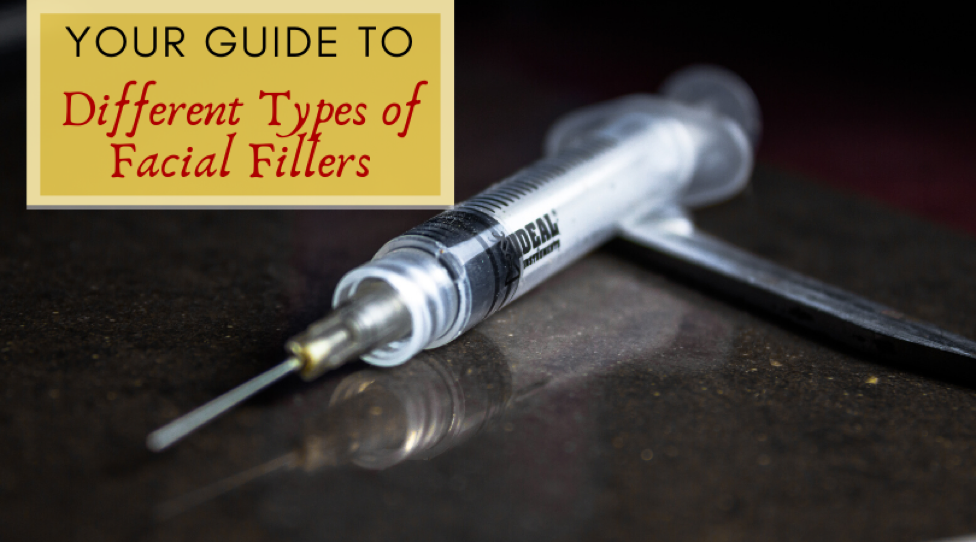As we add more years to our lives, we look older. This is just the natural process, however, nowadays, more and more people are still younger looking, even if they have already passed their prime years. What you may not know is that most of these people are using different types of facial fillers to fill out their fine lines and wrinkles.
What Are Facial Fillers?
Facial Fillers are substances that are injected within your fine or deep lines, folds, and tissues. Its goal is to reduce your wrinkles and fine lines, giving you a youthful appearance. Facial Fillers are either made up of naturally occurring substances such as hyaluronic acid or synthetic materials.
There are different types of Facial Fillers, and we’re going to talk about them later in this article. Different types of fillers were created to cater to the different areas were fillers are mostly injected. Each of your facial parts has a certain amount of filler and flexibility in order for it to give it you natural-looking results.
What Are Facial Fillers For?
As we age, our skin loosens up, and the tightness of our skin, which allows us to look younger, is affected. This can result in unwanted lines, such as fine lines and wrinkles. Facial Fillers can greatly help you reverse time and give you younger-looking skin. It can be injected beneath your fine lines so you will have younger-looking skin.
Aside from that, it can also be used to enhance your facial features and make it more prominent. Enhance being the word since it doesn’t really change your appearance, contrasting to surgeries, which can really alter your facial features. Fillers can enhance your features such as nose, lips, cheeks, and others by adding more volume to the area where the filler is injected.
What Are the Different Types of Facial Fillers?
Hyaluronic Acid (HA) Fillers
It may sound dangerous because it has the word Acid, but trust me, it is not. Hyaluronic Acid is a gel-like substance that exists in our body. Its main task is to keep your connective tissues and your skin moist and well hydrated. It has the ability to lock in the water on the part where it is injected. Because of this, it can give you a good amount of volume when it is injected.
Another defining feature with Hyaluronic Acid us that it is ideal for smoothing your wrinkles and fine lines out, especially on your lips, eyes, and forehead area. Fillers that are made from Hyaluronic Acid generally only last for 6 – 12 months. However, today, some of HA Fillers can even last up to years. The great thing about HA Fillers is that it can be easily removed.
Calcium Hydroxylapatite (CaHA) Fillers
Not a very common filler, Calcium Hydroxylapatite Fillers uses Calcium and adds it to the filler or gel, which is then injected. This Calcium is in the form of microscopic particles, so it doesn’t create bumps once it is injected.
The gel for the Calcium Hydroxylapatite Fillers has a thicker consistency as compared to the Hyaluronic Acid fillers. Calcium Hydroxylapatite Fillers work best when it is used as a filler for deep wrinkles.
Poly-L-lactic Acid Fillers
Poly-L-lactic Acid is a biodegradable acid. It works by stimulating your skin to produce collagen, instead of actually ‘filling’ out your wrinkles. This is the reason why the fillers of this type are firm and voluminous. Poly-L-lactic Acid Fillers are ideal for those who have deep wrinkles. It can also be used to add fats to the area where you have lost fats.
The downside of this filler is that it works gradually, and its results can often be seen after two years minimum. The number can vary from one brand to another, depending on the filler’s construct. Because of this, Poly-L-lactic Acid Fillers are often regarded as a Semi-Permanent filler.
Polymethylmethacrylate (PMMA) Fillers
Polymethylmethacrylate Fillers contain a lot of tiny microscopic balls, which is commonly known as microspheres. Aside from that, it also contains Collagen, which is the main ingredient for giving your skin a good amount of plump. This filler’s effects can last up to 5 years, which is why a lot of doctors regard Polymethylmethacrylate Filler as a permanent filler.
Polymethylmethacrylate Fillers is known as the filler that develops a lot of complications such as nodules and infections. This is the reason why this is commonly the last on the list when it comes to recommending fillers.
Autologous Fat Injections (Fat Grafting)
This type of filling out is different from the rest of our listed fillers. The reason for this is that with the Autologous Fat Injections, the fat from any of your body parts will be taken out. It will then be used to fill out your wrinkles and fine lines.
Among our list of fillers, this is the only one that involves liposuction and incisions. These are just some of the crucial parts for this type of filler procedure since the fat that is taken out will be used to fill out the area that you want to be filled with. The positive thing about this is that since your own body fat is used, the filled out part will look natural on your skin. The downside for this is that you need a week or two to become fully healed.

